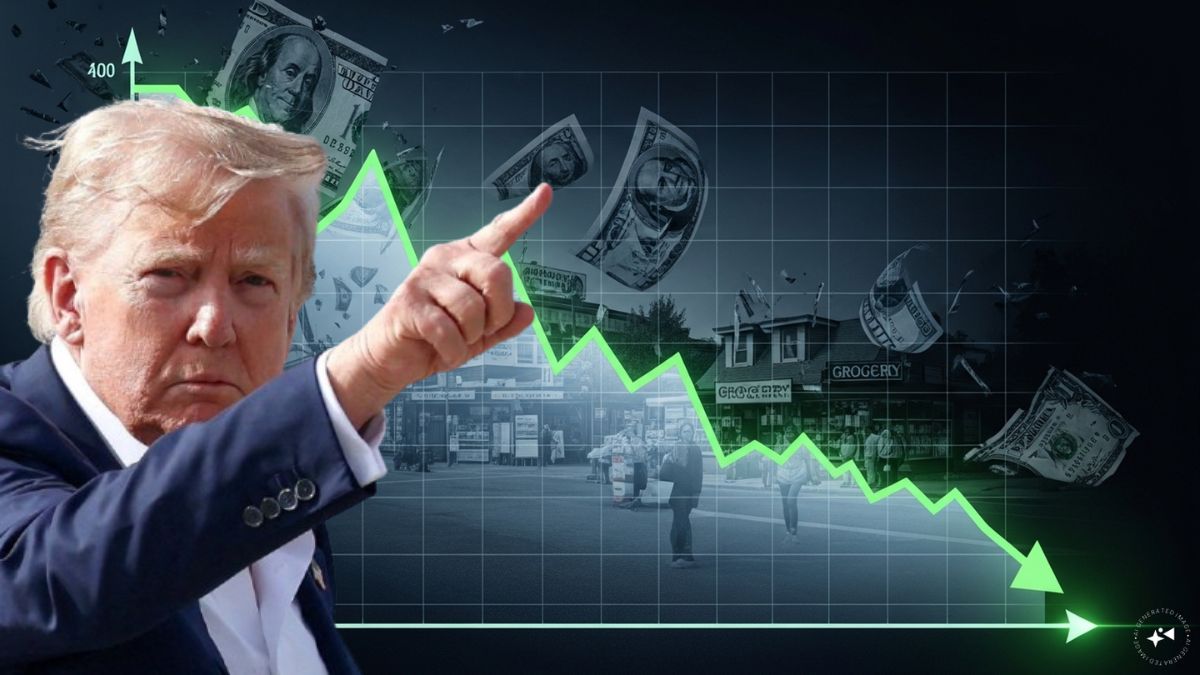The Trump administration’s pledge to revive American power is colliding with an unexpected reality: the US dollar is weakening at a pace not seen in more than half a century. This has sparked one of the most consequential debates in global economics. The question is no longer simply whether Washington wants a weaker currency, but why its policies have produced such a result despite claims of restoring national economic dominance. The historic dip in the US dollar appears paradoxical to the “Make America Great Again” movement—is the Maga momentum starting to slip?
The dollar suffered its steepest first-half fall in over 50 years during 2025, dropping nearly 11 per cent in the six months following Trump’s inauguration. The dollar index fell 10.8 per cent in H1, while the euro has risen 13 per cent to above $1.17. This reversal stands in stark contrast to pre-election expectations that Trump’s plans would strengthen the greenback.
Trump’s promise of Maga collides with a weakening dollar
Yet the decline is not the outcome of a coherent, intentional strategy; instead, it reflects the unintended consequences of aggressive and unpredictable policies that have unsettled global markets and eroded confidence in American leadership.
Inside the administration, conflicting perspectives on the role of the dollar have produced a fragmented policy approach. Treasury Secretary Scott Bessent continues to back the traditional strong dollar stance. In contrast, Council of Economic Advisers chair Stephen Miran has floated a “Mar-a-Lago Accord” aimed at weakening the currency. Meanwhile, Trump appears to alternate between defending the “mighty US dollar” against foreign influence and criticising its strength for hindering American exports.
Trump’s tariff drive complicates the picture further. The “Liberation Day” tariff announcement on April 2 triggered sharp market turmoil, wiping more than US$5 trillion from the S&P 500 within days. Although standard economic theory suggests tariffs should strengthen a currency by reducing imports, the administration’s shifting decisions have introduced uncertainty and clouded the outlook for the US economy, contributing to the dollar’s decline rather than reversing it.
Quick Reads
View AllFiscal concerns also weigh heavily. Trump’s tax measures are projected to add trillions of dollars to the national debt over the coming decade, prompting foreign investors to reduce their exposure to the Treasury market. Policy unpredictability has damaged the dollar’s safe-haven status, while strained alliances and ambiguous geopolitical positions have further weakened confidence. The dollar’s sharp slide during heightened volatility after “Liberation Day” marks a notable break from its historical role in times of stress.
Foreign investors sold US$63 billion in US equities between March and April 2025, reducing their record 18 per cent ownership share and signaling deeper anxiety about institutional stability and policy direction. Added to this are concerns about the administration’s threats to use the dollar system as a weapon, a posture that risks encouraging allies and competitors to consider alternatives to dollar-based systems.
Decline rooted in the tariff war
The cumulative evidence indicates that the Trump administration has not deliberately engineered a weaker dollar through a coordinated plan. Instead, the currency’s historic decline stems from contradictory internal positions that confuse investors, aggressive tariff actions, mounting fiscal pressures, erratic policymaking, and threats that push partners to seek non-dollar pathways.
The result is a striking irony. An administration that frequently invokes the strength and centrality of the US dollar has pursued policies that accelerate the very de-dollarisation it warns against. Whether this damage can be contained or signals a more profound shift in the global monetary order that has underpinned American influence for eight decades remains uncertain. If the aim was to weaken the dollar to aid manufacturing, the goal may be materialising, but at a cost far beyond initial expectations.


)

)
)
)
)
)
)
)
)



